
Screenwriting can feel like a lonely job sometimes. You’re sitting at your desk, staring at a blinking cursor, trying to conjure a world that feels alive. But here’s the secret sauce: the more you think like a director, the more your words will leap off the page.
Visual storytelling isn’t just the cinematographer’s job. It starts with you, the screenwriter. And one of the simplest, most powerful tools you can use to write visually is the Rule of Thirds.
You’ve probably heard the term tossed around in film school or photography tutorials. But what does it mean for the screenwriter? How can a grid help you write better scenes?
In today’s blog, we’ll be breaking down the Rule of Thirds, seeing it in action, with some Celtx top tips along the way. By the end you’ll be writing action lines that practically storyboard themselves!
3, 2, 1… let’s go!
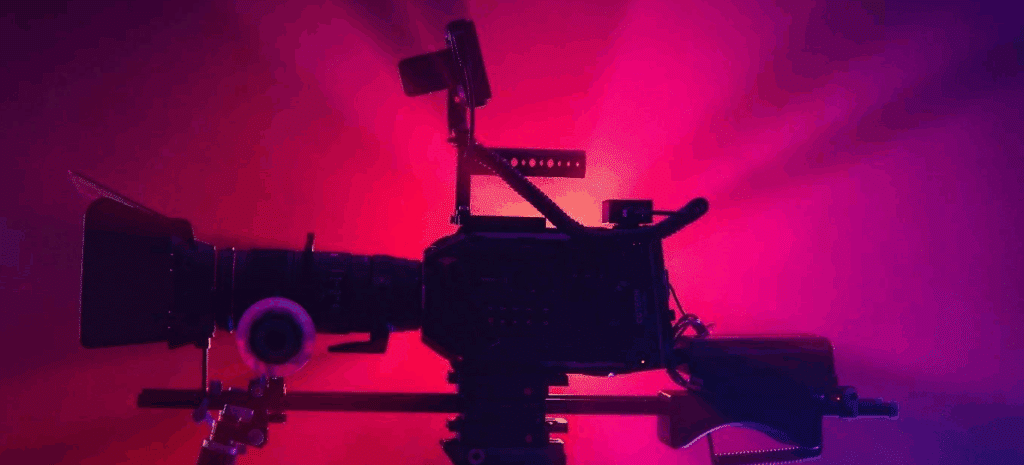
Table of Contents
- What is the Rule of Thirds?
- The Power of the Grid
- From Theory to Script: Writing Action Lines that Direct
- Writing for the Frame: Genre-Specific Tips
- Iconic Film Examples: The Rule of Thirds in Action
- Mini Case Study: How the Rule of Thirds Elevates a Short Film
- FAQs
- Conclusion
What is the Rule of Thirds?
The rule of thirds is a composition guideline in visual arts, photography, and design. It suggests dividing an image into nine equal parts using two equally spaced horizontal lines and two equally spaced vertical lines.
The idea is to place the main subject or important elements along these lines or at their intersections, rather than in the center, to create a more balanced, natural, and visually appealing composition.
Imagine your screen divided into a tic-tac-toe grid: two vertical lines, two horizontal lines, creating nine equal rectangles. The points where these lines intersect are called power points, where our eyes naturally go.
Placing your subject along these lines or intersections creates a more dynamic, emotionally charged frame. It’s the difference between a flat image and one that comes to life.
Think of it like this: center-framing is safe. Rule-of-thirds framing is storytelling.
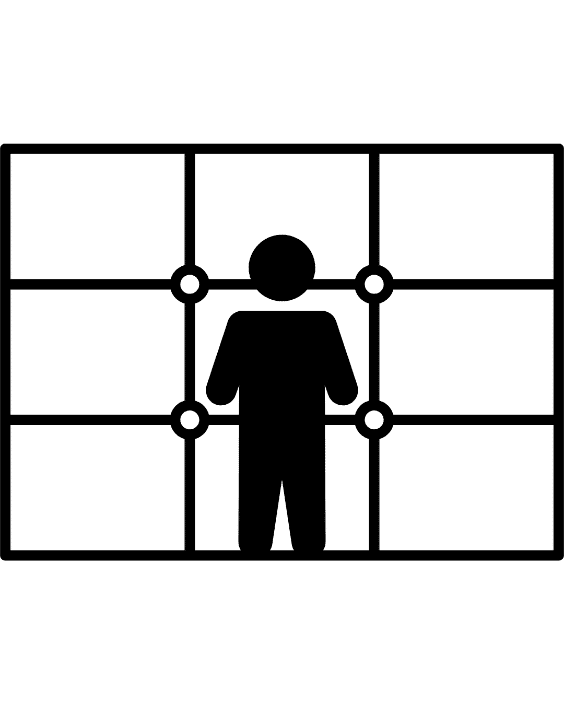
“I can’t emphasize enough how the rule of thirds is such a powerful technique in telling a story in a single frame… It gives filmmakers the ability to tell where the audience should focus their eyes on the screen” – Michael Weinstein, Director (If Trees Could Talk, White Knuckle)
The Power of the Grid
You don’t need to be a cinematographer to understand composition. You just need to know what makes a shot feel right. Here are three concepts that pair beautifully with the Rule of Thirds and that you can hint at it in your writing.
Negative Space
Negative space is the empty area around your subject. It’s not just ‘blank’ but emotionally charged. It can suggest isolation, anticipation, or even danger.
For example:
Jamie stands on the far edge of the rooftop. Behind him, the city stretches into a hazy blur.
This line implies that Jamie is placed on one third of the frame, with the city filling the rest. That empty space? It’s doing emotional heavy lifting.

Leading Lines
Leading lines are visual paths such as roads, hallways, fences that guide the viewer’s eye toward a subject. They create movement and focus.
For example:
A narrow hotel corridor. Alex walks slowly, pushing a luggage cart.

Here, you’re not just describing a hallway but directing the shot. The corridor becomes a visual arrow pointing to Alex.
Off-Center Composition
Centering a subject can become quite static. To change things up, off-center placement creates tension, curiosity, and emotional nuance.
For example:
Sam sits alone at the coffee bar, staring at his phone. The empty café stretching in front of him.
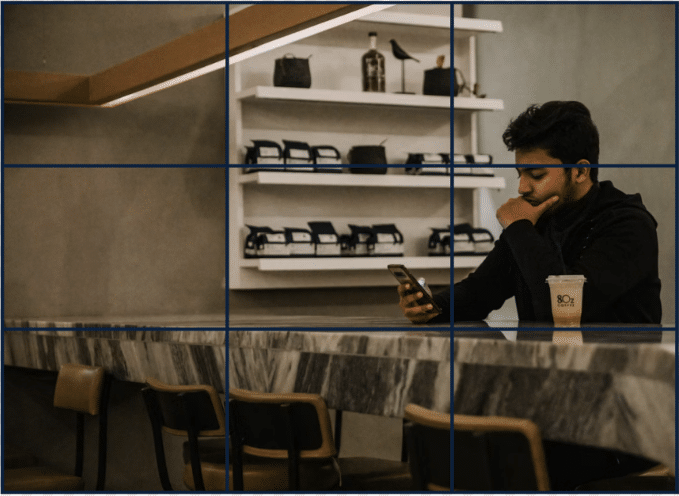
Sam’s position on the right third of the fame suggests introspection. The café fills the rest, creating mood and texture.
From Theory to Script: Writing Action Lines that Direct
Here’s the fun part! You don’t need to write ‘camera left’ or ‘frame on the lower third’. In fact, this is a big no for writers!
You just need to suggest the composition through your action lines. How do you do that? Well, here are three techniques you can use:
1. Use Spatial Language
Words like edge, corner, center, behind, ahead, to the left, to the right, all hint at placement. For example:
Lena stands at the edge of the room, half in shadow.
This line tells the reader and director exactly where Lena is. It’s visual, evocative, and easy to shoot.
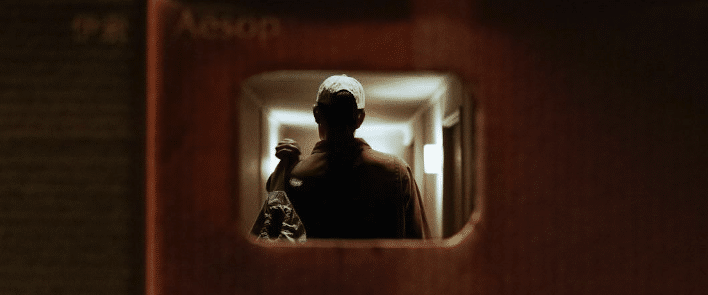
2. Suggest Movement Across the Grid
Characters moving from one third to another create dynamic shots. Just like this:
Ben walks from the bed to the open doorway.
You’ve just described a shot that uses the full grid, and you didn’t need a single camera direction!
3. Use the Environment to Frame Emotion
Did you know that the environment can be a character too? Here’s an example:
Mia stands silhouetted against the horizon, her coat flapping in the wind.
This line creates a powerful image. The horizon, the silhouette, the movement: it’s all there.
“The rule of thirds is a pragmatic approach to framing. There is a good reason the rule of thirds is an important concept—it works. Audiences understand this style of visual language.” – Edward Drake, Writer-Director (Apex, Gasoline Alley)

Writing for the Frame: Genre-Specific Tips
Different genres use the Rule of Thirds in different ways. Here’s how you can tailor your action lines to match the tone and visual style of your story:
Drama
Use negative space and off-center framing to reflect emotional distance or tension. For example:
Ella sits on the far end of the couch. Her mother, silent, watches from the doorway.
This composition suggests emotional separation without the characters saying a word.
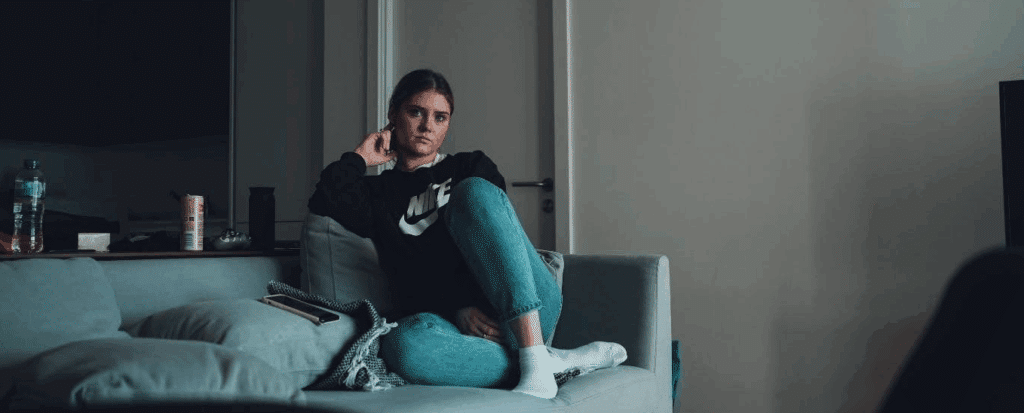
Comedy
Play with symmetry and imbalance. Comedy often thrives on visual contrast like this:
Three siblings cram into one side of the sofa. The fourth sits alone, smug, on the other.
The imbalance is funny, and it’s framed using the Rule of Thirds.
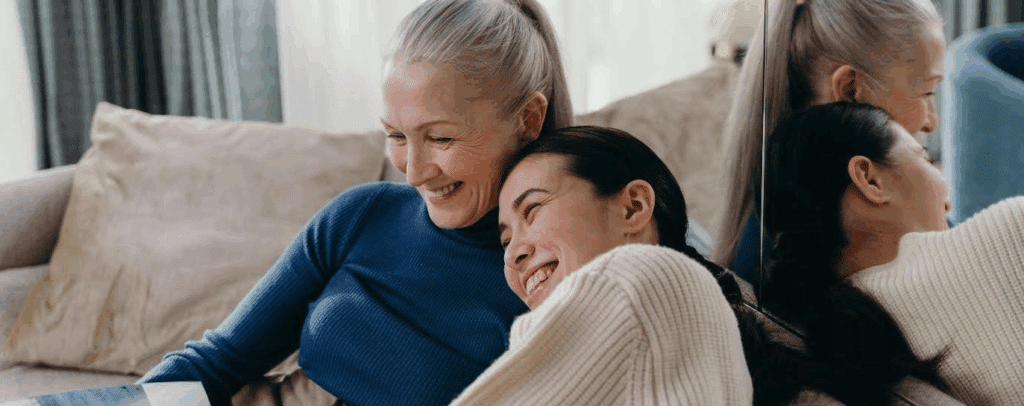
Horror
Use leading lines and negative space to build suspense. For example:
The hallway stretches into darkness. A single bulb flickers above. Jess steps forward, unaware of the shadow behind her.
This composition builds dread. You’re writing the scare before it happens.

Thriller
Use off-center framing to create unease or mystery. Like this:
The detective stands in the foreground. Behind him, blurred, a figure watches.
You’re planting visual clues, and tension, through composition.
Want to learn more about camera angles and shots? Then our comprehensive guides, Celtx: Your Ultimate Tool for Creating an Efficient Shot List and 6 Essential Camera Shots Every Screenwriter Should Know are just for you!
Iconic Film Examples: The Rule of Thirds in Action
Let’s geek out for a moment and take a look at some prime examples of the Rule of Thirds in some of our favorite movies.
Mad Max: Fury Road (2015)
George Miller’s post-apocalyptic ballet is a masterclass in visual storytelling. While many shots are centered for impact, quieter moments use the Rule of Thirds to isolate characters in vast landscapes.
Watch for Furiosa standing off-center against the desert, the War Rig slicing through the horizon, and the use of negative space to heighten tension.
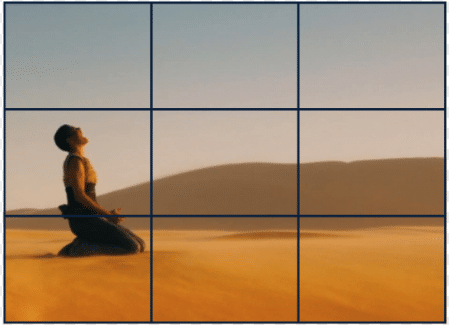
The Grand Budapest Hotel (2014)
Wes Anderson is famous for symmetry, but when he breaks it, it’s intentional. Characters placed off-center in ornate settings create visual tension and emotional contrast.
Watch for: Gustave and Zero in hallways, staircases, and train compartments, often framed on thirds to emphasize their relationship dynamics.
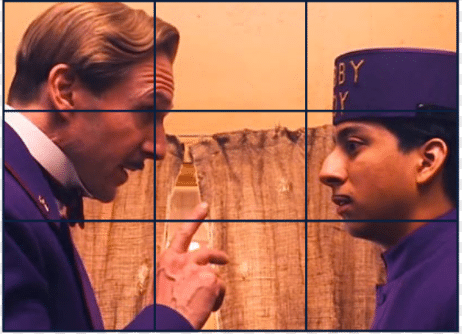
No Country for Old Men (2007)
Roger Deakins’ cinematography is haunting. Characters are often placed on the left or right third, with empty landscapes filling the frame. It’s a visual metaphor for the film’s existential themes.
Watch for: Anton Chigurh walking through desolate towns, framed against vast skies and empty roads.
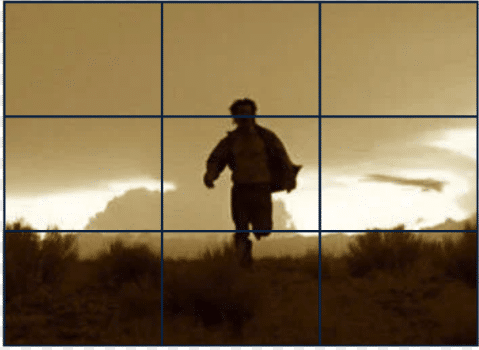
Plan every shot and every scene with Celtx’s pre-production tools.
Click here to learn more.
Mini Case Study: How the Rule of Thirds Elevates a Short Film
Let’s say you’re writing a short film about two estranged siblings reconnecting after years apart. You want the visuals to reflect their emotional journey.
Here’s a breakdown of how you could write key plot points:
Opening Scene
This sets the tone of the piece. To start with, we need loneliness and anticipation as the siblings prepare to meet again.
Jamie stands alone at the bus stop. The empty road stretches out beside him.
Midpoint
Next, we want to use the composition to show emotional distance between the siblings.
Jamie and Alex sit on opposite ends of a park bench. A tree trunk divides them.

Final Scene
Now the siblings are united, so the composition needs to mirror their story arc.
They walk side by side down the road, the city behind them.
This is how you need to write visually, without ever using camera angles or directions.
FAQs
Nope. It’s a guideline. Great filmmakers break it all the time, but they know why they’re breaking it. Learn the rule, then bend it for good reason.
Think of a tic-tac-toe board over your screen. Place important stuff such as faces, eyes and horizon lines on the lines or intersections.
Try this exercise:
– Watch a scene from your favorite film with the sound off.
– Pause and sketch the frame.
– Write an action line that evokes that composition.
– Use Celtx’s Storyboard feature to test it visually.
Not at all! There’s symmetry, depth, contrast, framing, and more. But the Rule of Thirds is a great starting point; it’s simple, effective, and widely used.
Conclusion
Here’s the truth: great screenwriting isn’t just about dialogue or plot. It’s about visual communication. When you understand how composition works, your writing becomes cinematic, even before a camera rolls.
The Rule of Thirds is your entry point. It’s a tool that helps you write scenes that feel alive, that guide the eye, that tell stories through space and silence.
So next time you write an action line, ask yourself:
Where is the character in the frame? What’s around them? What does the composition say about their emotional state?
Great writing is great visual communication. Plan your next project today with Celtx.
Up Next:

What is a Storyboard? The Basics of How to Get Started
The rule of thirds helps you think visually — now see how storyboards bring those ideas to life. Learn how to map out your shots before you film.
